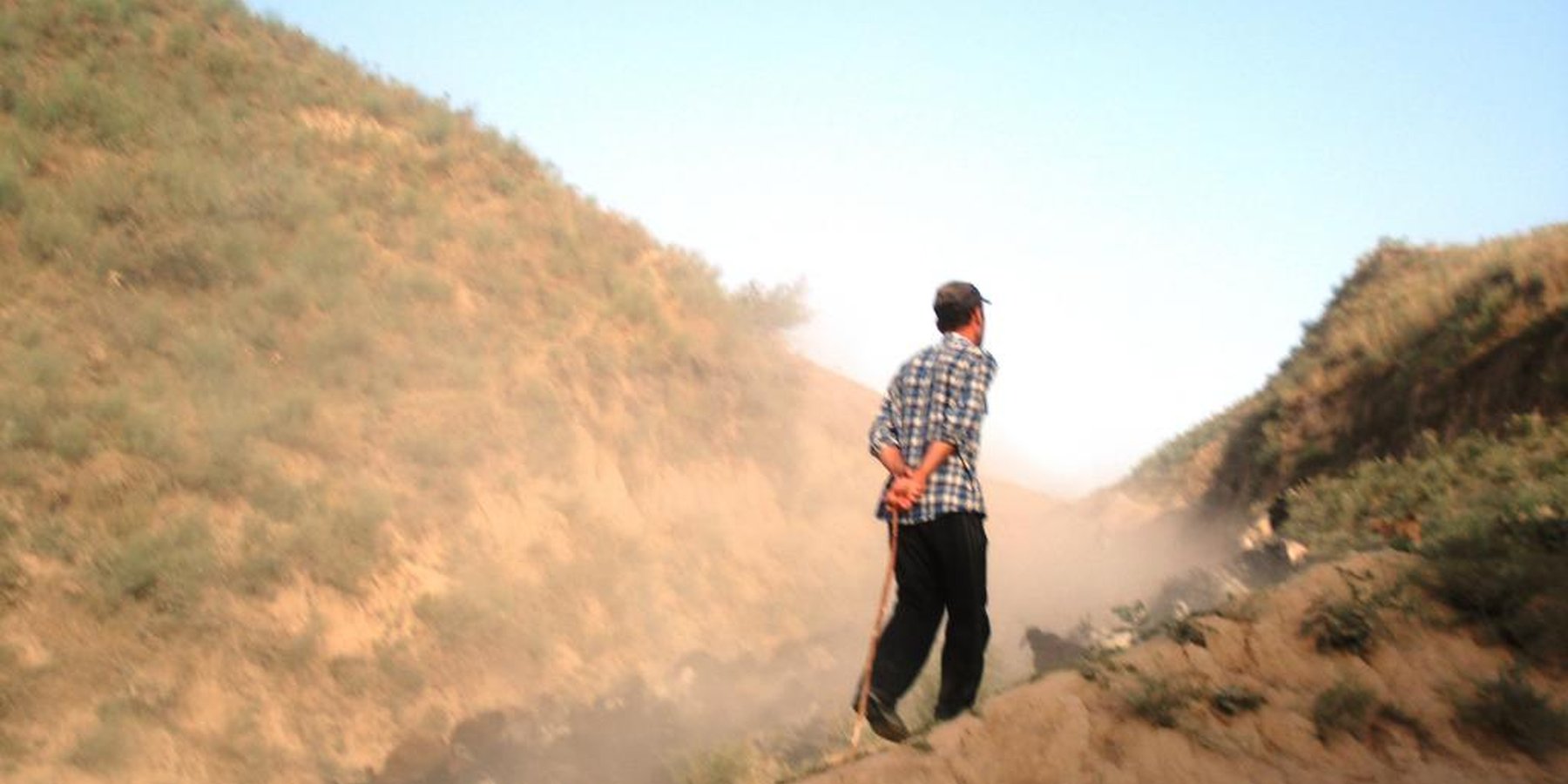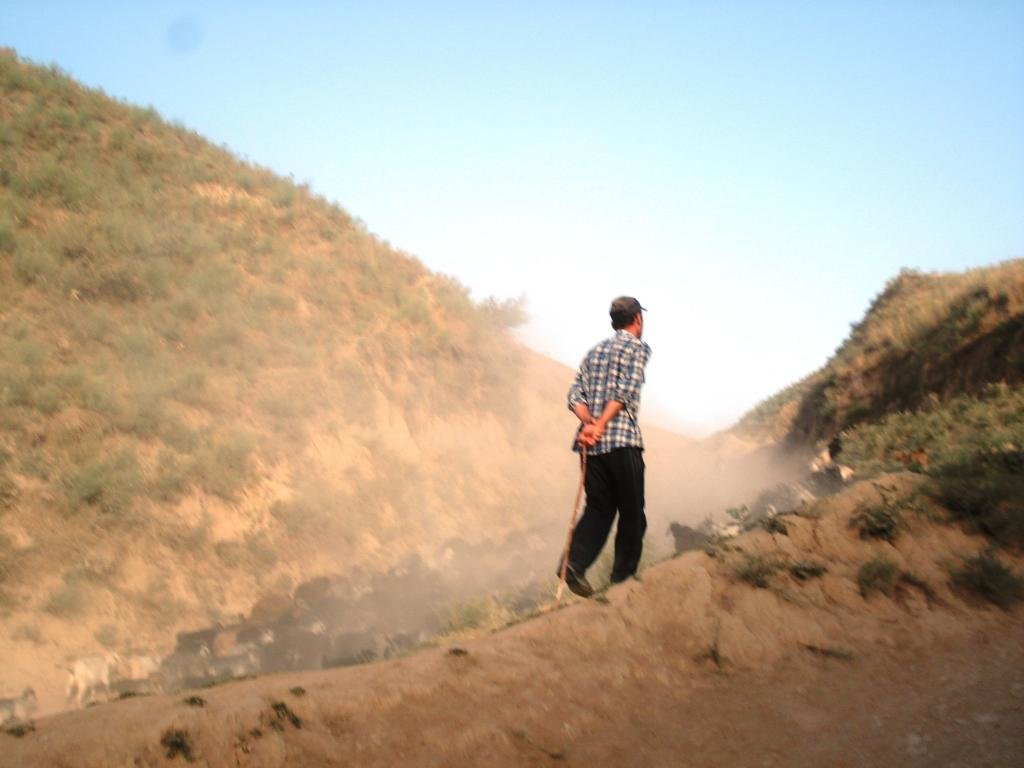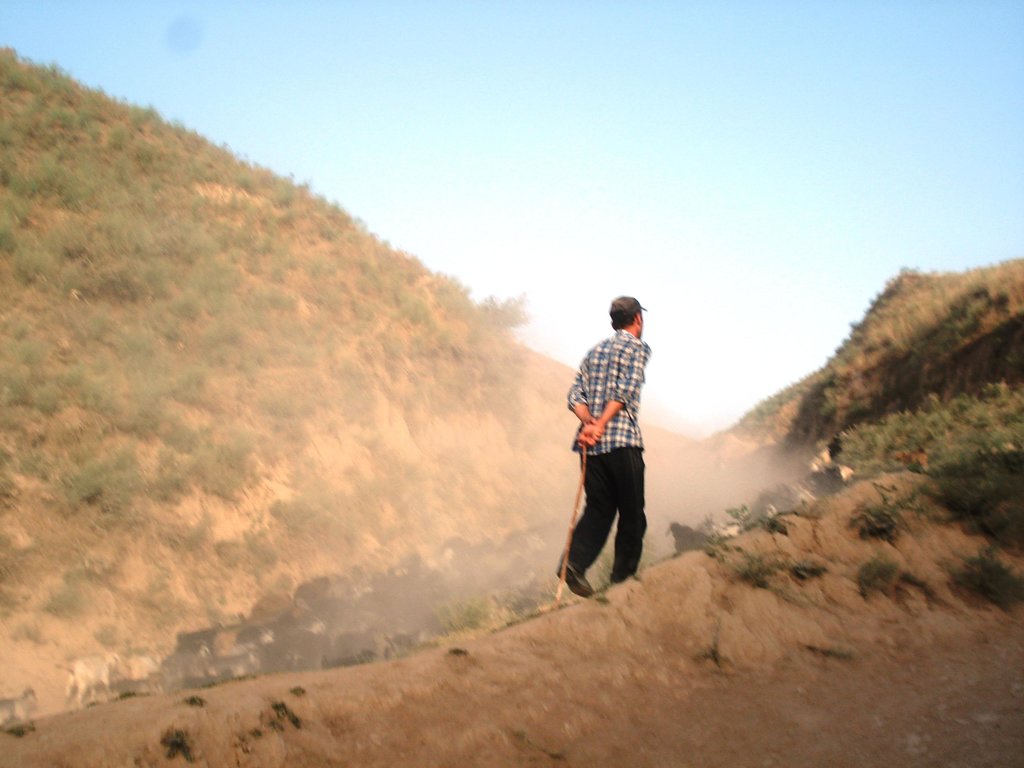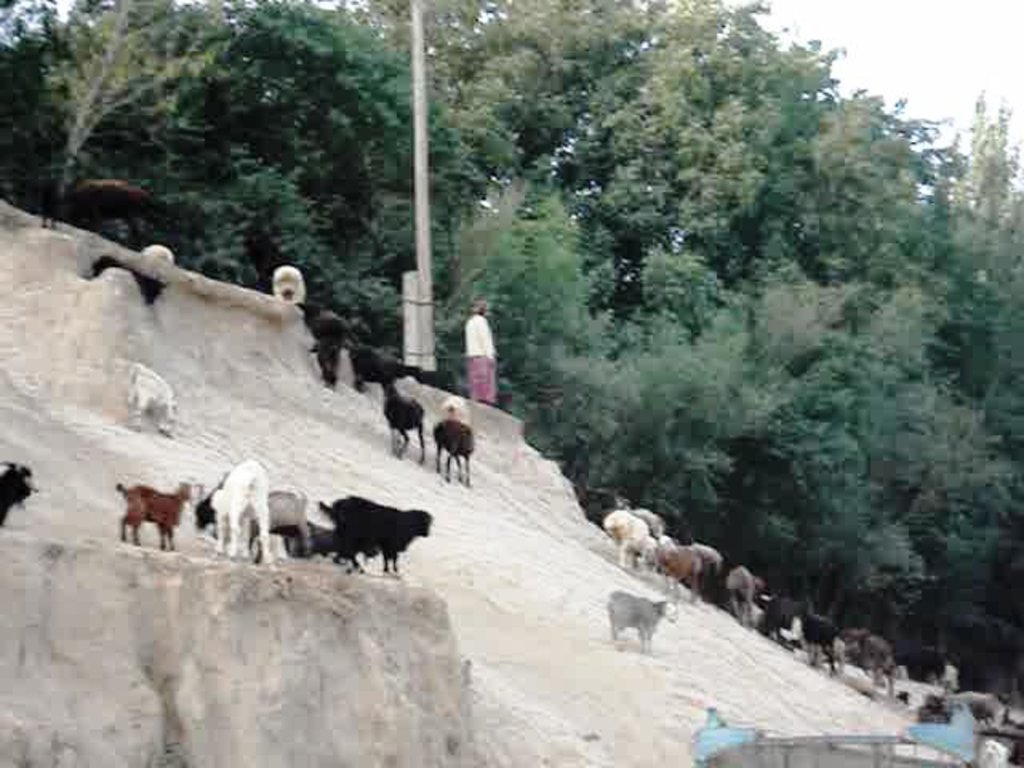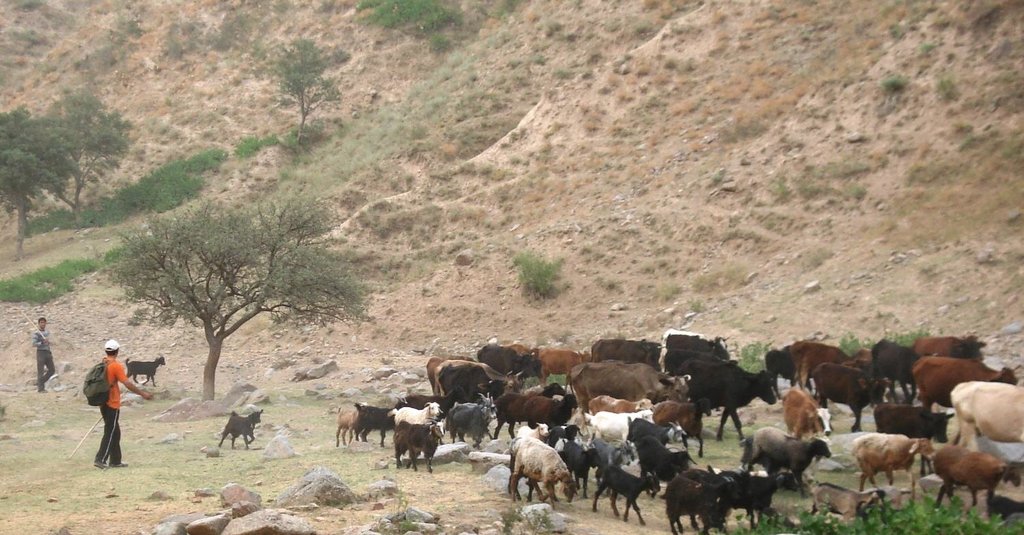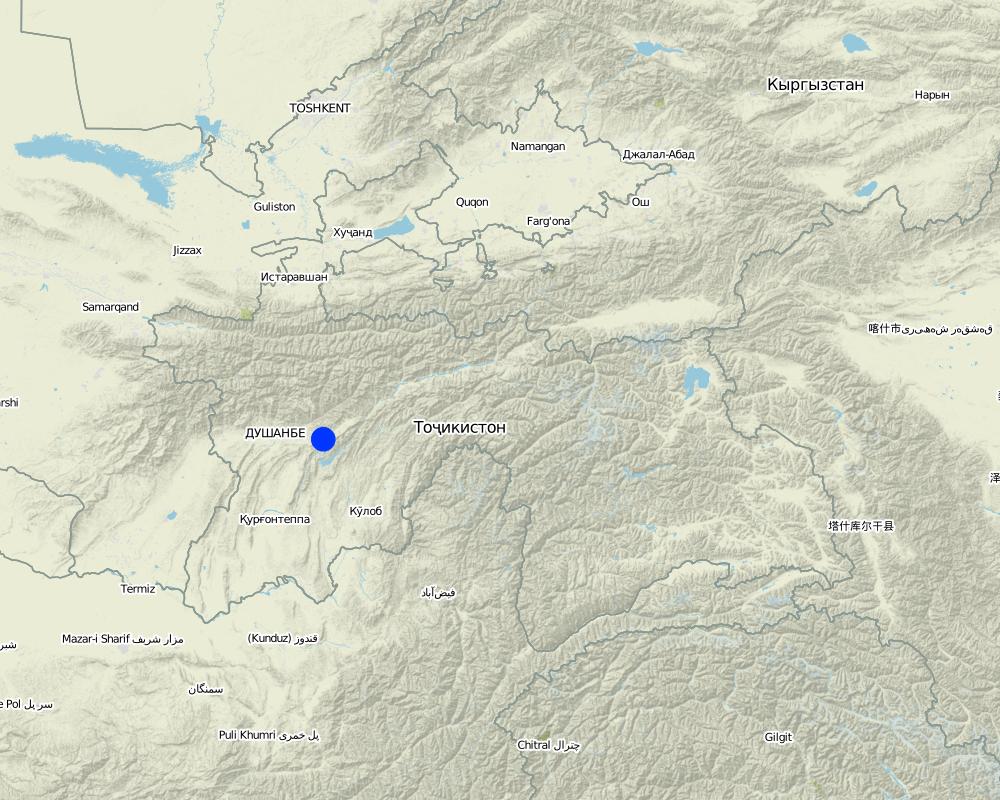Common village herding [Tajikistan]
- Creation:
- Update:
- Compiler: Christian Wirz
- Editor: –
- Reviewer: David Streiff
Navbati Poda (succession of herders)
approaches_2656 - Tajikistan
View sections
Expand all Collapse all1. General information
1.2 Contact details of resource persons and institutions involved in the assessment and documentation of the Approach
Name of the institution(s) which facilitated the documentation/ evaluation of the Approach (if relevant)
CDE Centre for Development and Environment (CDE Centre for Development and Environment) - Switzerland1.3 Conditions regarding the use of data documented through WOCAT
When were the data compiled (in the field)?
15/08/2008
The compiler and key resource person(s) accept the conditions regarding the use of data documented through WOCAT:
Yes
1.4 Reference(s) to Questionnaire(s) on SLM Technologies
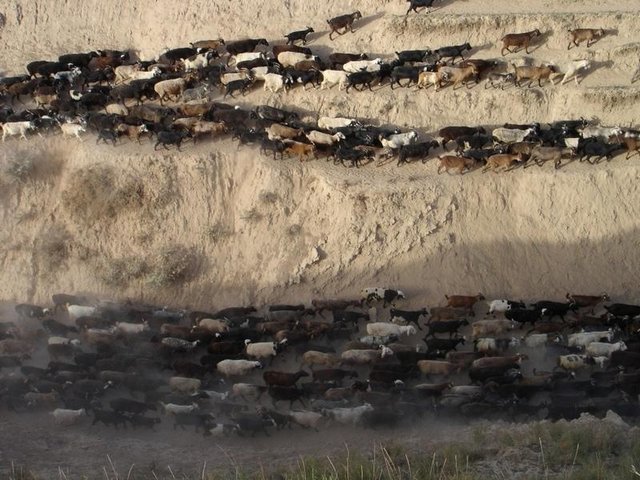
Daily grazing of village-herds [Tajikistan]
Rotational grazing on village pastures with heavy pressure with daily to weekly change of grazing places.
- Compiler: Christian Wirz
2. Description of the SLM Approach
2.1 Short description of the Approach
Village herding system with daily alternation of the herders including each household in a monthly turnus.
2.2 Detailed description of the Approach
Detailed description of the Approach:
Aims / objectives: The herding system has to be easy and little labour-intensive, because children are the main workforce. It is a collective system and thus requires the participation of all households with families: For instance in the village Karsang with 141 households (not all having livestock) and two village herds, each family has to send monthly one child for herding or pay if it does not have workforce. In addition, always at least one adult has to accompany the herd. This means that children of big families only rarely miss school whereas those from small families miss more frequently. The final objective is to nourish animals maximally so they need a minimum of costly hay and concentrated feed (in terms of labour respectively in financial terms).
Methods: Children and adults are taught by the elders, the parents and the village land use committee how the rotation works: They should not stay at one place longer than three days, they should not chase the animals which otherwise lose energy unnecessarily and they shall not lose animals. Children not obeying are punished. In case of lost animals different approaches exist: Mostly the family of the herder who was responsible for the herd on the respective day reaches an agreement with the tenant's family.The village committee or elders can also arbitrate.
Stages of implementation: It is difficult to say when this system first emerged. A land user says that during Soviet Union there were village herds with a fix herder or an alternation like nowadays and, parallely, wealthy people had their own herd with a paid herder. During civil war only a few rich villagers kept animals and only at the beginning of the 2000s collective herding reemerged.
Role of stakeholders: The implementation of herding is a matter of each family's participation. The collaboration of the villagers with institutions is especially important in questions of taxes. In most villages the households pay per capita animal taxes. In order to improve SLM the land use committee on district level and the forest administration (as far as the village has such pastures) together with the local representants of the ecology commission advise the land use committees of each village to take the appropriate measures. And these talk with the herders to influence their comportment. A teacher from the local land use committee says that a lot is said about SLM, but little is effectively done.
2.3 Photos of the Approach
2.5 Country/ region/ locations where the Approach has been applied
Country:
Tajikistan
Region/ State/ Province:
Region of Republican Subordination
Further specification of location:
Faizabad
Map
×2.6 Dates of initiation and termination of the Approach
Indicate year of initiation:
1920
2.7 Type of Approach
- traditional/ indigenous
2.8 Main aims/ objectives of the Approach
The Approach focused mainly on other activities than SLM (Maximal nutrition of livestock with child labour.)
In animal husbandry the semi-monetary value of livestock is important. Therefore, 'everyone would like to have more animals', says a land user. At the same time agricultural population has other activities such as the cultivation of kitchen-gardens and of cropland. And labour shortage is omnipresent, with many young men staying in Russia for work. In these multistrategies efforts for herding must be minimised which is best possible if children are sent as herders.
The SLM Approach addressed the following problems: The approach needed and needs to be compatible with the traditionally sedentary culture and with the new employment and income sources in local economy: be it the work as a taxi-driver or selling vegetables on the local market. Today herding has to be especially cheap (finance, labour) because there is a multitude of preferences how to invest resources: building a (better) house, buying a mobile phone and a car or enabling (higher) education of children.
2.9 Conditions enabling or hindering implementation of the Technology/ Technologies applied under the Approach
availability/ access to financial resources and services
- hindering
Keeping animals is expensive because you have to nourish them (see costs of technology).
Treatment through the SLM Approach: The use of comparatively cheap grazing land of the former collective farms that is under village administration and contracts with forest administration for cheaper land are the solution.
institutional setting
- hindering
If the defined herding system is not respected, cover is damaged, especially trees. And institutions have little authority in implementation, partly because of their own corruption.
Treatment through the SLM Approach: Implementation is based on the households: They do not only send their children for herding, but they also punish them if they treat animals badly.
legal framework (land tenure, land and water use rights)
- enabling
The existing land ownership, land use rights / water rights moderately helped the approach implementation: The fact that a great part of grassland of former collective farms has not yet been attributed to farmers' associations makes it possible for everyone to use them. The only disadvantage in the eyes of land users is that they have to pay rent fees for this land.
workload, availability of manpower
- hindering
It is difficult to find labour force that is able to walk to the pastures with the animals, because many young men are in Russia.
Treatment through the SLM Approach: Children are cheap and mobile.
3. Participation and roles of stakeholders involved
3.1 Stakeholders involved in the Approach and their roles
- local land users/ local communities
ny people with animals participate in collective herding. Especially poor families cannot afford professional herding.
There are both boys and girls working as herders. Among adults, men more often working as herders than women.
The role of women is traditionally associated with domestic work and kitchen gardens.
- SLM specialists/ agricultural advisers
Different institutions: land use committees, forest administration, committee for ecology.
- teachers/ school children/ students
If several stakeholders were involved, indicate lead agency:
Mainly land users supported by SLM specialists
3.2 Involvement of local land users/ local communities in the different phases of the Approach
| Involvement of local land users/ local communities | Specify who was involved and describe activities | |
|---|---|---|
| initiation/ motivation | self-mobilization | Initiatation and planning was organised among villagers. They based themselves on experiences from Soviet times and from before. |
| planning | none | |
| implementation | interactive | Recently the institutions mentioned have become more important. |
| monitoring/ evaluation | none | |
| Research | none |
3.4 Decision-making on the selection of SLM Technology/ Technologies
Specify who decided on the selection of the Technology/ Technologies to be implemented:
- land users alone (self-initiative)
Explain:
Animal husbandry is chosen as an important strategy because it provides for higher levels of self-sufficiency.
Decisions on the method of implementing the SLM Technology were made by mainly by land users supported by SLM specialists. Even if the methods are somehow prescribed by land use committees, herders themselves finally decide on the herding strategy.
4. Technical support, capacity building, and knowledge management
4.1 Capacity building/ training
Was training provided to land users/ other stakeholders?
No
4.2 Advisory service
Do land users have access to an advisory service?
No
4.4 Monitoring and evaluation
Is monitoring and evaluation part of the Approach?
Yes
Comments:
bio-physical aspects were regular monitored by other through observations; indicators: Local land use committees go to the pastures in spring to decide whether soils are dry enough and gr
economic / production aspects were ad hoc monitored by land users through observations; indicators: Land users control if their animals are fat and if they give milk. Otherwise they might not send the
There were no changes in the Technology as a result of monitoring and evaluation: None
4.5 Research
Was research part of the Approach?
No
5. Financing and external material support
5.1 Annual budget for the SLM component of the Approach
If precise annual budget is not known, indicate range:
- < 2,000
Comments (e.g. main sources of funding/ major donors):
Approach costs were met by the following donors: local government (district, county, municipality, village etc) (Meetings of administration with leaders.): 20.0%; local community / land user(s) (Organising herding: low costs.): 80.0%
5.3 Subsidies for specific inputs (including labour)
If labour by land users was a substantial input, was it:
- voluntary
Comments:
Herding is not rewarded by anyone. But if a family does not respect its obligations (monthly sending a herder) it has to pay compensation.
5.4 Credit
Was credit provided under the Approach for SLM activities?
No
6. Impact analysis and concluding statements
6.1 Impacts of the Approach
Did the Approach help land users to implement and maintain SLM Technologies?
- No
- Yes, little
- Yes, moderately
- Yes, greatly
Did the Approach empower socially and economically disadvantaged groups?
- No
- Yes, little
- Yes, moderately
- Yes, greatly
Especially poor population could profit from cheap communal pastures and thus afford keeping livestock.
Did other land users / projects adopt the Approach?
- No
- Yes, little
- Yes, moderately
- Yes, greatly
It can be assumed that this somehow logical solution of herding for settled people (not like in other Central Asian countries) emerged as a part of self-sufficient strategies during USSR. Similar herding patterns might though have existed already before USSR, according to local experts.
Did the Approach lead to improved livelihoods / human well-being?
- No
- Yes, little
- Yes, moderately
- Yes, greatly
Compared to a situation without private livestock this is clearly an improvement in terms of
Did the Approach help to alleviate poverty?
- No
- Yes, little
- Yes, moderately
- Yes, greatly
By increasing self-sufficiency it did contribute to better nutrition of rural households with livestock than of many people in town who have to buy meat (which is expensive).
6.2 Main motivation of land users to implement SLM
- increased production
- well-being and livelihoods improvement
Little SLM is contained in the approach of common herding. But if there is motivation to implement S
6.3 Sustainability of Approach activities
Can the land users sustain what has been implemented through the Approach (without external support)?
- uncertain
If no or uncertain, specify and comment:
On the one hand decreasing productivity of pastures threatens their daily use by big herds. On the other hand the increasing consciousness of leaders about degradation might make herding more expensive (animal taxes) and not affordable for everyone anymore.
6.4 Strengths/ advantages of the Approach
| Strengths/ advantages/ opportunities in the land user’s view |
|---|
| This form of herding is not conflictive: all people can afford it and everyone contributes to it by sending an own family member for herding. And, if a herder loses a villager's animal, the villager knows that he will also be a herder and might lose an animal, too. (How to sustain/ enhance this strength: The institutions - be it elders or the land committee - must implement the technology.) |
| Strengths/ advantages/ opportunities in the compiler’s or other key resource person’s view |
|---|
| Common herding has a strong social component as it makes herders cooperate in order to maintain reputation (How to sustain/ enhance this strength: Projects in Muminabad proposed by the village with a professional herder elected in a village meeting ) |
6.5 Weaknesses/ disadvantages of the Approach and ways of overcoming them
| Weaknesses/ disadvantages/ risks in the land user’s view | How can they be overcome? |
|---|---|
| The dependance upon children rather hinders the implementation of SLM, according to some land users. Children prefer to play rather than to respect rules about herding, says for example a teacher. And he adds that also adults do not always respect the established rules and that nobody controls effective implementation of the technology. | It is difficult to find adult herders. One village - Chujamar - decided to engage a professional herder, who would lead the cows to the pastures separately. Because cows cannot be lead only by children like little animals, according to the chief of that village. The villagers pay around 2$ per cow and season for herding. |
| Weaknesses/ disadvantages/ risks in the compiler’s or other key resource person’s view | How can they be overcome? |
|---|---|
| Land users mention that implementation is difficult with herders (often children) that lack the necessary knowledge to implement SLM. | It is difficult to abolish child labour. But, by completing the herders' team with at least one professional, paid herder, progress in SLM would be possible perhaps. And making pastures a subject in school might help to araise awareness about SLM. |
Links and modules
Expand all Collapse allLinks

Daily grazing of village-herds [Tajikistan]
Rotational grazing on village pastures with heavy pressure with daily to weekly change of grazing places.
- Compiler: Christian Wirz
Modules
No modules


